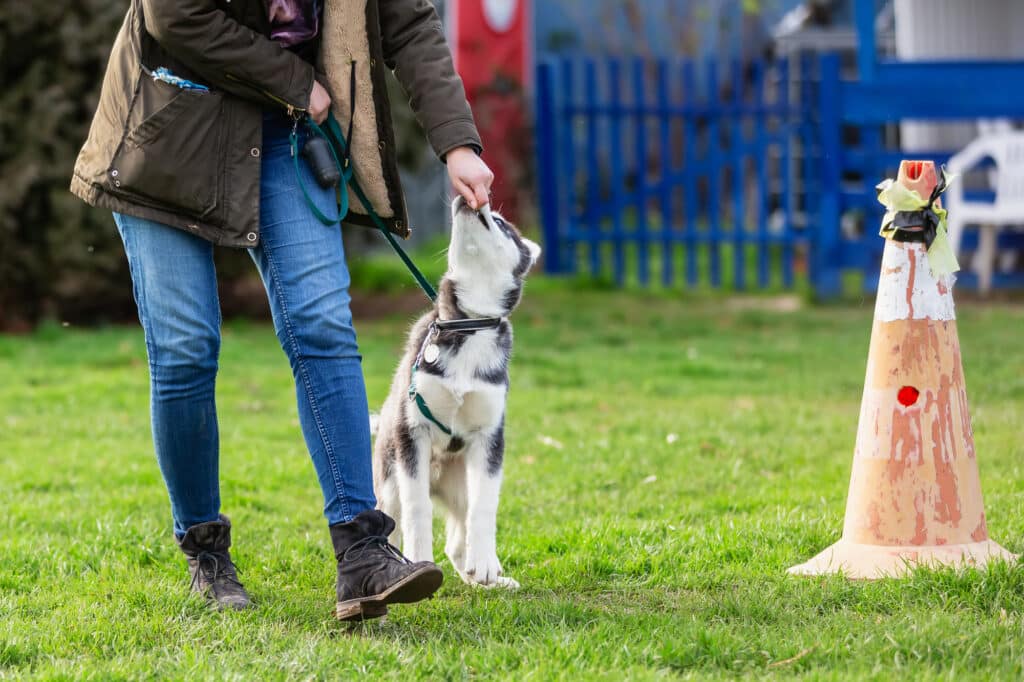
As a pet owner, it’s crucial to understand the importance of using positive reinforcement in dog training. One of the effective ways to do this is by using dog-training treats. But how can you use these treats properly to get the best results?
We’ll explore some tips and techniques for using dog-training treats effectively.
Choose the right treats
The first step to using dog training treats effectively is to choose the right ones. Small, soft, and smelly treats work best when it comes to dog training. Soft treats are easier for your dog to chew and swallow quickly without getting distracted or losing focus. Small treats are convenient for you to carry around in your pocket or training pouch without causing discomfort.
As for the scent, dogs have an evolving sense of smell and it’s essential to choose treats with a strong smell that your dog loves. This helps to create positive associations in your dog’s mind, making them more motivated and focused during training.
Timing is everything
When it comes to dog training, timing is everything. Timing your treat delivery is crucial for positive reinforcement training. The dog needs to comprehend that it is being rewarded for the correct behavior and should be delivered instantly. To achieve this, you must always have treats handy during training.
Reward the desired behavior
One of the most crucial elements of using dog training treats is rewarding the desired behavior. This means rewarding your dog the moment it does something correctly. When starting with a new behavior, you need to use the treats heavily to motivate your dog to continue doing the right thing.
As your dog progresses and becomes better at a particular activity, you can start to use the treats less but still offer them intermittently as a bonus reward. Remember that training treats are different from regular dog food or human snacks. Using them appropriately lets your dog know when it has done something right and reinforces good behavior.
Use a clicker
A clicker is a small handheld training tool that helps with dog training. When pressed, it makes a distinctive clicking sound, which marks the exact moment your dog has done something correctly. This sound is followed by a treat, reinforcing the desired behavior. Clickers help make training more efficient and precise, saving time and frustration for you and your dog.
The clicker helps to achieve clarity between the owner and the pet during training. Your dog learns to associate the sound of the click with the delivery of a treat. With time, the dog begins to understand that certain actions trigger a particular sound, and it must take the said action to hear the rewarding sound. This understanding helps the dog learn and retain various behaviors.
Avoid overfeeding
While dog training treats are essential in positive reinforcement training, avoiding overfeeding is crucial. Feeding your dog too many treats during dog training can lead to weight gain and other health issues. In addition, too many treats can lower the effectiveness of positive reinforcement training, as the dog may lose motivation to work for the treat, feeling that it will get the reward regardless of its behavior.
To combat overfeedinbg, ensure you’re using small, low-calorie treats and don’t use them as a primary food source. When training, give your dog tiny portions at any given time to allow it to finish training while avoiding overfeeding.
Gradually reduce treat usage
The goal of dog training is to get your dog to perform a specific action without needing a treat as a reward. Once your dog has learned the behavior, gradually reduce the amount of treats you use and use praise and physical affection instead.
Reducing the treat usage allows your puppy to adapt to completely doing the action since it knows you expect that particular behavior from it. Over-relying on treats can lead to the dog training forgetting the specific action if there is no treat reward to act as the necessary motivation.
Maintain consistency
Consistency is crucial when it comes to dog training in Sacramento. You must be consistent with your commands and reward deliveries when introducing new behaviors. Your dog requires a clear understanding of what is expected during different tasks.
Consistency also includes ensuring that your treats are of the same quality, size, and scent. Changing the treat brand or scent without a proper introduction can confuse the dog, making it lose focus during training. Once you have found the right training treat, stick with it for a more secure training experience.
Thoughts
Dog training treats can be incredibly beneficial in training your furry friend. When used correctly, they can help motivate and reinforce positive behavior by making your dog a well-trained and obedient pet. Remember to choose the right treats, use the treats correctly, keep the timing precise, reward desired behaviors, use a clicker, avoid overfeeding, gradually reduce treat usage, and maintain consistency. With these tips, you’re well on your way to training your dog using positive reinforcement methods.



